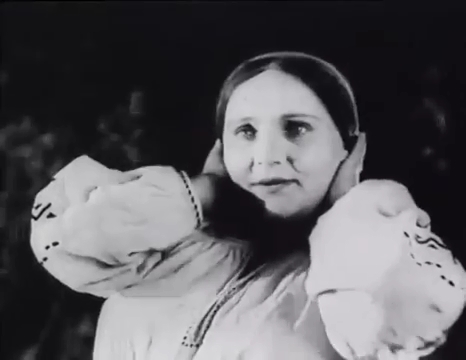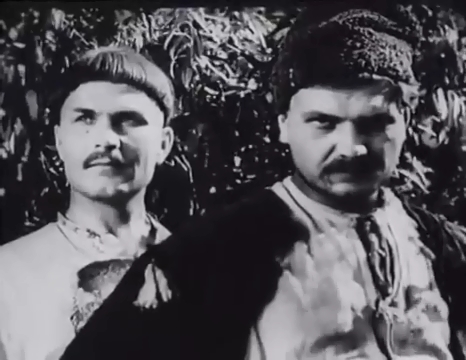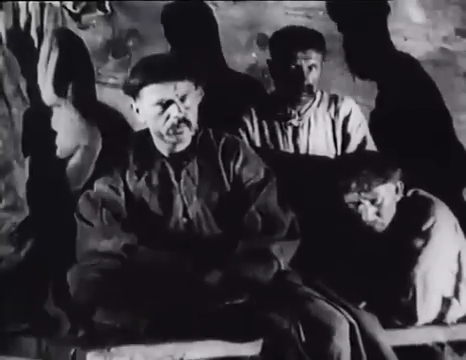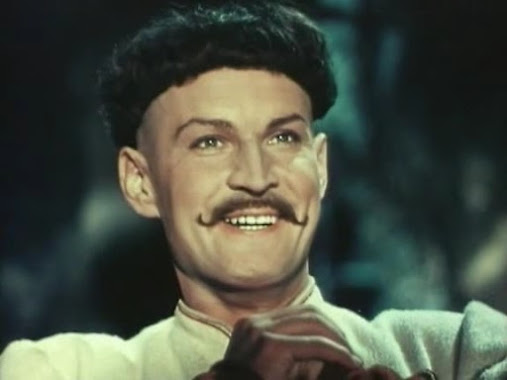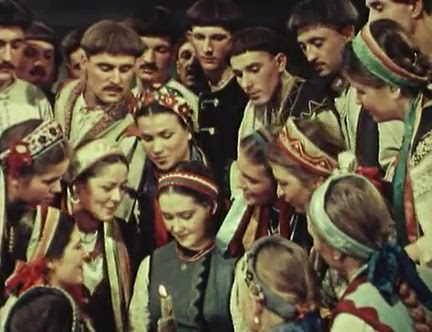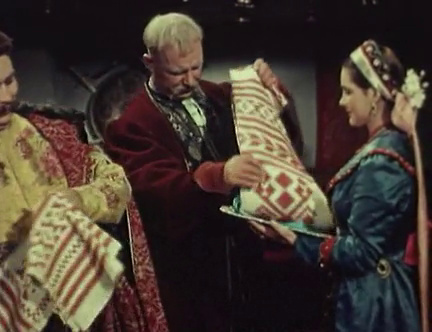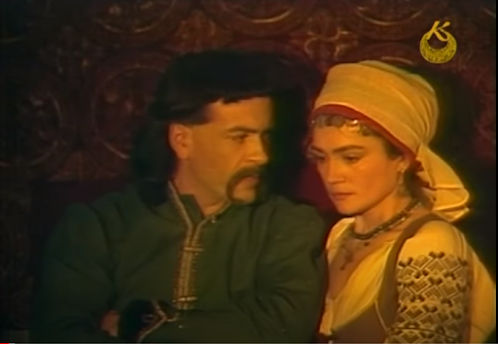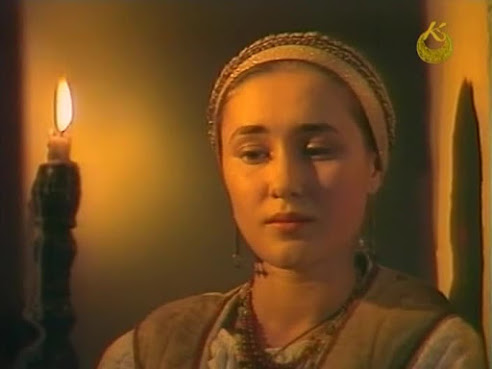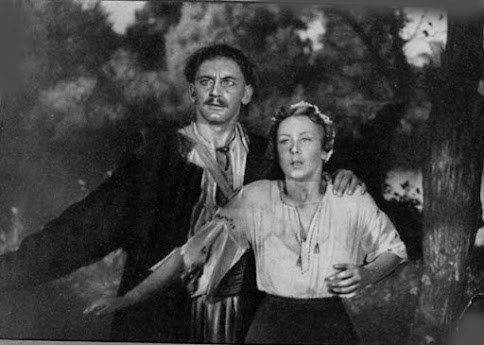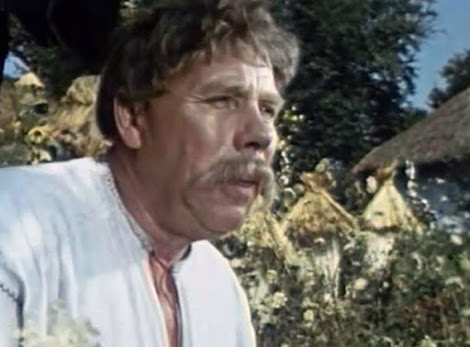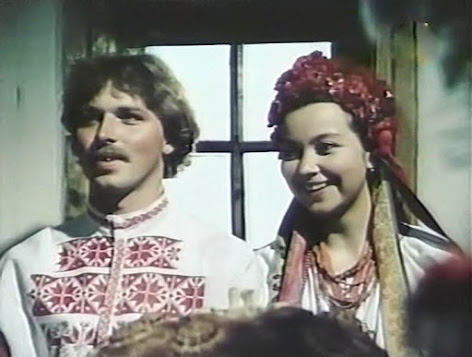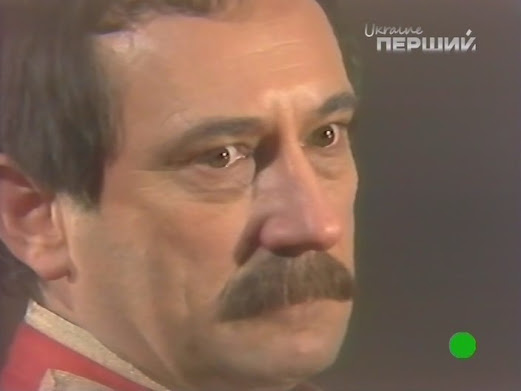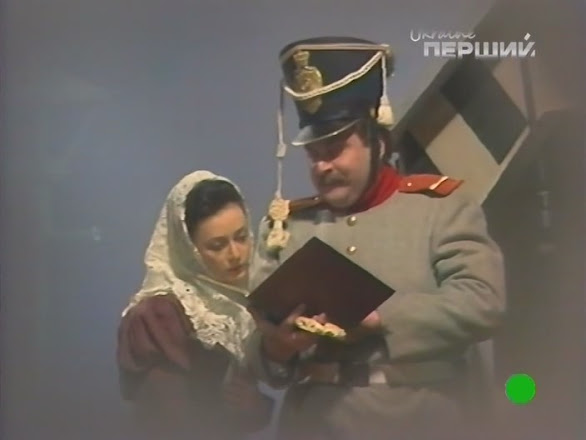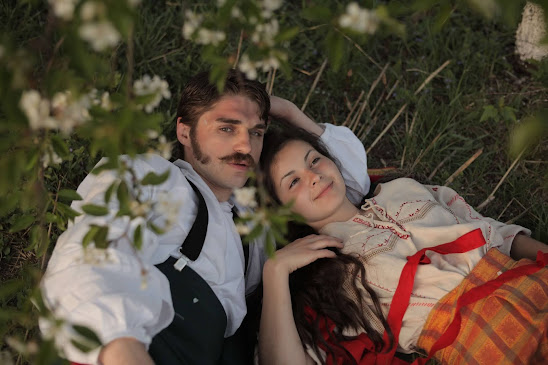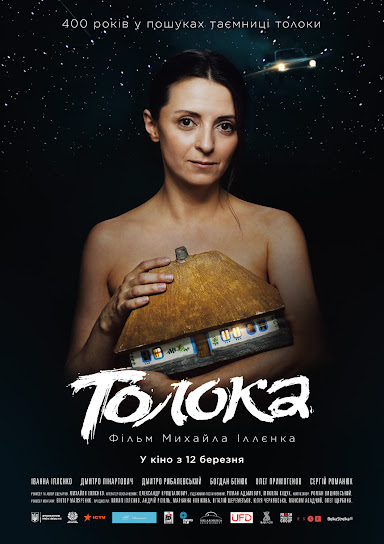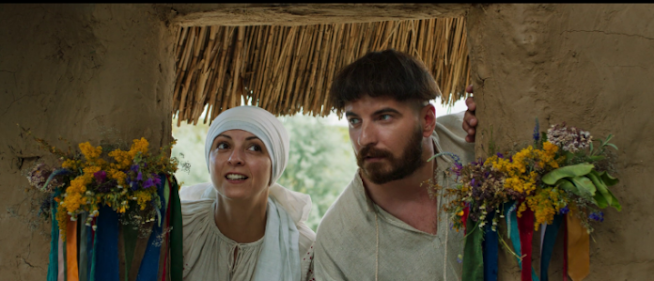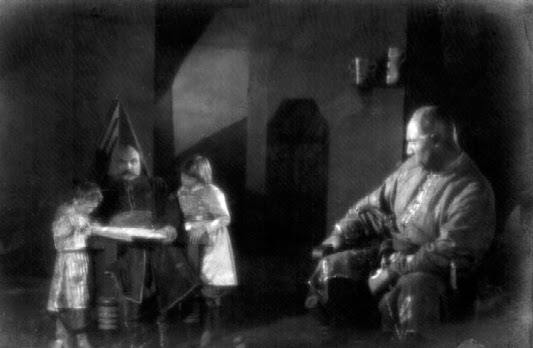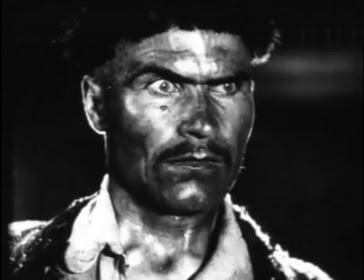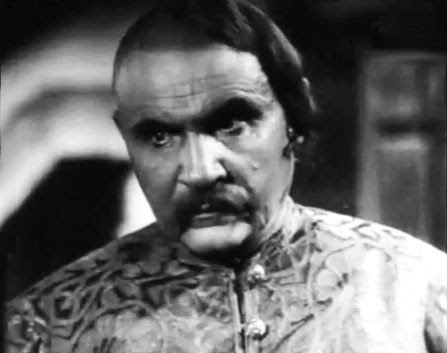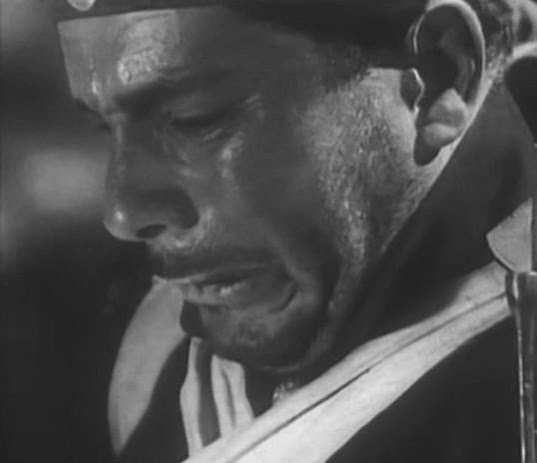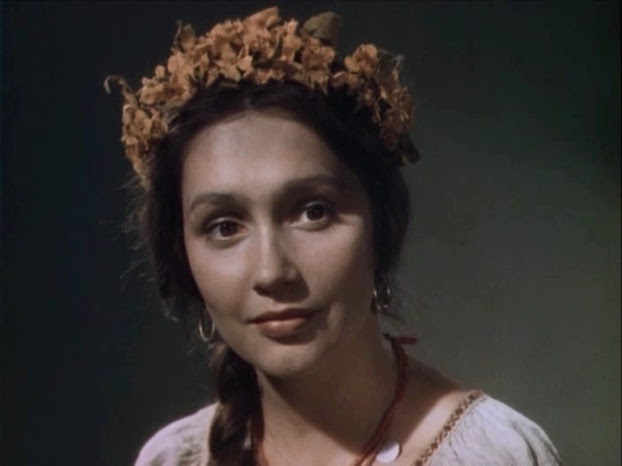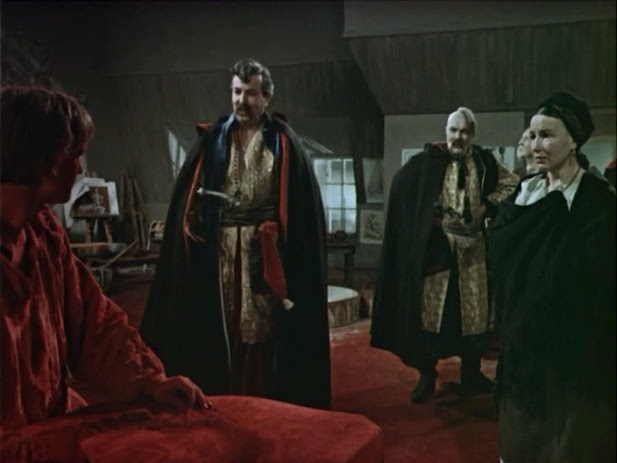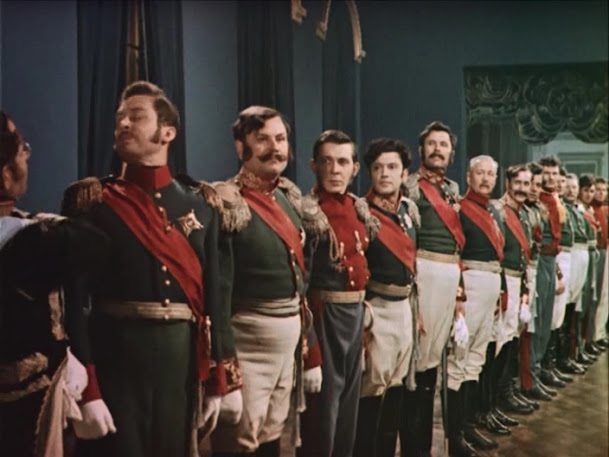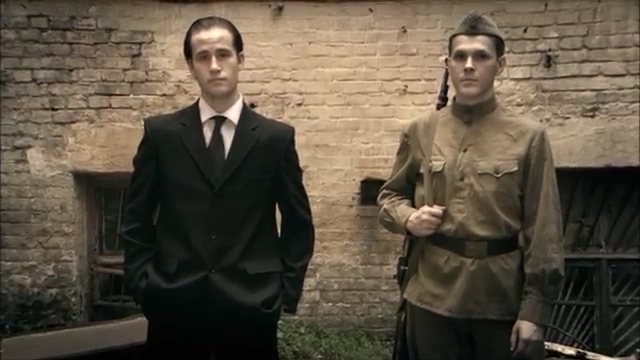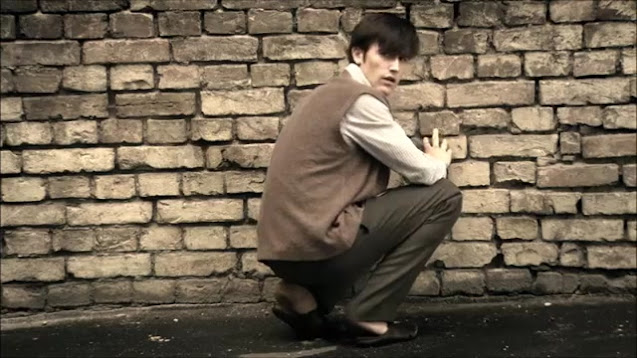![S3700133[1]](https://kilok.art/wp-content/uploads/2021/03/S37001331.jpg)
On the occasion of Shevchenko's Days, we have material about Shevchenko's adaptations in cinema (only feature films: animation is a separate topic).
The basis was my article "Motifs and Images of Kobzar in Cinema" (Kino-Teatr magazine, No. 1, 2014), supplemented with excerpts from the reviews "Parade of the Free" (Kino-Teatr magazine, No. 1, 2015) and "Toloka as an Attempt at Ukrainian Historiosophy" (Kino-Teatr magazine, No. 4, 2020).
1910–1920s: The First Adaptation and Unrealized Projects
Ukrainian cinema could not ignore the figure of Taras Shevchenko or his works. While biographical films about the Kobzar became significant events in the history of national cinema ("Taras Shevchenko" by Petro Chardynin, 1926; "Taras Shevchenko" by Ihor Savchenko, 1951; "The Dream" by Volodymyr Denysenko, 1964), the history of adaptations of his literary works is less renowned but still quite interesting.
Promotional poster for "Kateryna" by Ch. Sabinsky, published in *Kino* magazine, 1920s.
The first known film adaptation of Shevchenko's work was "Kateryna" in 1911. Although the posters credited K. Hansen as the director, the production was largely carried out by screenwriter Cheslav Sabinsky. Due to his careful approach to authenticity, the film is also considered, perhaps, the first Ukrainian domestic film with attention to ethnographic details.[1]. The screenplay was based on the original text of the poem, adapted for filming. Such careful treatment of the source material was uncommon at the time, as screenplays were often based on opera librettos. "Kateryna" was not just an ordinary film—it was dedicated to the 50th anniversary of Shevchenko's death. Emphasizing its educational mission, the production highlighted the social themes of the story.To his credit, the director also aimed to avoid the clichés of "Little Russian" sentimentality and theatricality, which plagued contemporary (and not only contemporary) cinema. Seeking greater realism, Sabinsky filmed on location (with cinematographer J. Meyer) and incorporated ethnographic materials to depict everyday folk life. However, this focus on local color sometimes led to an overemphasis on ethnographic elements. The film also showed flaws in the form of "operatic" mass scenes, with stylized poses and elaborate costumes—a tendency that would affect later adaptations of Shevchenko’s works and Ukrainian-themed cinema in general.Nevertheless, the film secured a respectable place among the works of its era and was quite popular with audiences.[2]. An attempt to revisit "Kateryna" took place shortly before the German-Soviet war. The Kyiv Film Studio had begun preparations for a film based on the poem, but the war disrupted the production. During this time, Mykola Bazhan's screenplay was also lost.[3].
During the "Red Renaissance," despite a general interest in national classics and historical subjects, Shevchenko's works were not adapted for the screen. However, some steps were taken in that direction. In 1924, theater director Stepan Bondarchuk published the screenplay "Varnak". He introduced new characters and provided an analysis of the uprising, highlighting its strengths and weaknesses. Students of the Odesa Cinematography Technical School planned to adapt the screenplay for the upcoming Shevchenko Days and even managed to revise it. However, the project never reached the filming stage.Another unrealized project was "Haidamaky in Uman". In 1926, M. Panchenko and D. Buzko, who already had experience with Shevchenko-themed works through the film "Little Taras", submitted the screenplay for consideration to the Higher Cinematic Repertoire Council of VUFKU.
"Kino" magazine, 1926.
In 1928, the Taras Shevchenko Institute sent a letter to the VUFKU administration emphasizing the need to adapt Shevchenko's prose for the screen. Despite addressing important social issues, his prose remained less known to readers. Filmmakers were even informed that such a project would be easier to realize, as the filming of "Taras Shevchenko" had provided experience and left behind props that could be reused. The story "Kniahynia" ("The Princess") was recommended for adaptation. However, filming never began.The lack of Shevchenko adaptations was raised again in 1931. In connection with the 70th anniversary of Shevchenko's death, the Council of People's Commissars of the Ukrainian SSR issued a decree to produce several films based on his works. Only one film was completed, five years later: at the Odesa Film Studio, Heorhiy Tasin directed "Nazar Stodolia".[4].
"Nazar Stodolia": Three periods, three films.
Shevchenko's only complete dramatic work was adapted to the big screen twice — in 1937 (by Georgiy Tasin) and in 1954 (by Viktor Ivchenko). The first film is remembered largely for its rather free interpretation of the classic work and what was called a "vulgar-sociological" approach. The director himself described his adaptation as a transformation from a domestic melodrama into a historical, social drama, introducing a new central conflict — the struggle of serfs and Cossacks against the nobles and landowners. At that time, "rewriting" classics to highlight social themes was considered entirely acceptable. One of the critics wrote: "Kulik [scriptwriter - A. K.] developed and deepened the very images of the play […] Everything he added came from the very essence of the play."[5]. The film also attracted attention due to the participation of prominent actors - Ambrosiy Buchma as Khoma Kychaty and Natalia Uzhviy as Steha.
Natalia Uzhviy - Stekha
Given the extent of deviation from the original source, it is worth briefly summarizing the plot. The characters — Nazar and Hnat — were significantly transformed by Ivan Kulyk from Cossacks into serfs. Fleeing from their master, Khaleckyi, they end up at the home of Colonel Kychaty (their enmity becomes an additional storyline in the film), who accepts all the escaped serfs, promising to include them in his regiment. Through deception, he forces the fugitives to register as serfs, but those who disagree, led by Hnat, head to the Sich. Nazar, who is in love with the colonel’s daughter Halia, joins them. When Khaleckyi attacks the colonel and his daughter, the friends, who are by chance nearby, save them. Nazar becomes a standard-bearer and Halia’s fiancé. The rest of the plot largely follows the original source, right up to the finale, where Hnat shoots the colonel and starts a serf uprising. Nazar was primarily involved in the love storyline of the work, while Hnat became the central figure in the social narrative.
Nazar Stodolia - Oleksandr Serdyuk, Hnat - Mykola Pishvanov.
In fact, the latter, as the bearer of the active principle in the work, became the main character, with the uprising serving as the climax. However, the film by Tasin, which was later criticized for "rewriting" Shevchenko, turned out to be more "cinematic" compared to the subsequent adaptation: by reworking the work, the director simultaneously overcame its theatrical tone. Classical cinematic techniques were used here; overall, the film owes much to the cinematographer Mykhailo Bielski. These include close-ups and detail shots that acquire symbolic meaning: for example, Halia, in a delirious state, steps on a dropped wedding kerchief as she walks away. There is also play with light and shadow: for instance, the tense atmosphere in the barracks of the escaped serfs, in the house where they are celebrating the evening, is created by large moving shadows — a legacy of German Expressionist cinema. Finally, there’s the dynamic camera work. And outdoor shooting — showcasing the "luxurious Ukrainian nature" (by the way, one of Shevchenko’s leitmotifs); there are also shots that evoke the tradition of painting.
"Nazar Stodolya" by Viktor Ivchenko was created in a different cinematic era, in the era of the infamous "small films", the so-called "performance films" being an exemplary genre. This film was also staged on the basis of a performance (of the Lviv Theater named after M. Zankovetska, from which the director moved to cinema).[6]. Ivchenko paid attention to the "letter" of the work, but, like Tasin, he lost sight of its "spirit," although for a different reason. In a film-performance, the viewer has to perceive the film image within the framework of someone else's theatrical aesthetics. Here, everything is based on dialogues, which slows down the action; besides, cinema generally does not like explicitly "literary" dialog (unless it is an author's technique, of course). The acting is also appropriate. It is significant that in the previous adaptation it was of a slightly different character: on the one hand, one can feel the theatrical tradition, especially since the leading roles were played by theater natives Buchma, Uzhviy, Serdiuk, and Pishvanov. On the other hand, the 1930s, especially the Soviet era, was still a transitional period when elements of the aesthetics of the "great silent" were felt in sound cinema, including expressive actor's facial expressions and gestures (which differed from theatrical ones in their lower "volume" and use of half-tones-in short, they were designed for close-ups). "Ivchenko's Nazar Stodolya is connected not so much with the cinematic past as with the theatrical present.
Nazar Stodolia - Mykola Zymovets
Although the film can also be considered a certain return to the origins, to the 19th-century Ukrainian theater with its programmed populism. The latter served the interests of two sides — both national-minded artists, as propaganda for folk culture, and the authorities, who found it convenient to support the stereotype of the Ukrainian as a "romantic peasant." In the extreme case, a Cossack, as in "Nazar Stodolia", but in a "safe," also stereotypical version. Even Nazar's fiery tirades defending his dignity get drowned in the overall focus on admiring the "local color," which is not authentic but properly transformed for easy digestion by the audience. The singing and dancing scenes are particularly telling — of course, not in the "authentic" but in the ensemble version (the ensemble, after all, is perhaps the brightest example of "tamed" folk culture!). Compositionally, this "ensembleness" is not only not hidden, but, on the contrary, emphasized: the young men at the evening gathering are lined up like choir singers, behind the "soloist" — the kobzar. The girls are seated in a picturesque manner opposite them. Incidentally, the frankly "pictorial" shots with them are not rare, which also points to the film's genealogy: it is a "populist," not folk, artistic tradition absorbed by socialist realism. It is telling that the appeal to painting in the previous cinematic era had a somewhat different character: back then, it was an overt stylization, an attempt by the author to incorporate other arts into cinema; such was the technique in Kavaleridze's work, and to some extent, in Tasin's "Nazar Stodolia". In the newer adaptation, however, there is a genuine perception of the image as such; it’s not so much a reference to pictorial traditions as it is the presentation of the characters in a blatantly "figurative" form, emphasizing their conventionality. Before us are not rural girls to be brought to us by the film reel, but the "image of rural girls," artificially transferred onto film. In these shots, the secondary nature of the cinematic representation, the "manufactured" nature, rather than the "photographic" quality appropriate to the nature of cinema, is most clearly expressed. However, this applies to all the characters, including the main ones; it is probably not accidental that the episode of the heroes' escape is juxtaposed with the picturesque revelry at the evening gathering through parallel editing. The approach to Shevchenko’s work was not through a return "to the origins," to the folk culture that the work was meant to convey (as Parajanov would later do with Kotsiubynsky in "Shadows of Forgotten Ancestors" ten years later). The adaptation into film of a literary source, though intended for the stage, took place through additional mediation by other arts — theater, music, dance, painting. These, as it happened, did not blend into the cinema but subordinated it to themselves.
If we talk about the achievements of the film, its use of color should be highlighted. On one hand, it sometimes "shouts" too loudly about itself, but on the other hand, there are moments of color dramaturgy, especially in the costumes of the characters. Nazar's white attire symbolizes his purity of soul and sincerity; in the episode of the heroes' escape, the light colors of the lovers' coats "contrast" with the dark ones of the pursuers. Red plays with shades of meaning: passionate and militant in Hnat’s clothing, "carnal" and lustful in Stekha’s; the red of Nazar’s cloak, on which the lovers will sit, adds a touch of warmth and love to the "snowy" landscape palette. The delicate green color (a symbol of nature, life) is associated with the wedding kerchief. Perhaps it is through color that the filmmakers were most successful in conveying the emotional tone of the work.
Galya - Taisiya Litvinenko
The last adaptation is "Nazar Stodolia" by Tetyana Magar, a TV production from 1989. This time, they took a different approach, an "ethnographic" one: the film was shot in a distinctly museum-like cottage, similar to a Pyrohov-style house, where the entire setting screams its purpose to show "how our ancestors really lived." The intention was noble, but it was not successfully realized. First of all, the interior looks too "museum-like" in the bad sense of the word, that is, artificial and museum-like: everything is arranged in a picture-perfect manner and blatantly plays its role; most strikingly, the "light from the stove" is clearly of electrical origin. Secondly, we see a "real village house," not the colonel's living room, "richly decorated with carpets and velvet." The "old tavern" also looks unconvincing and dreadful, with walls made of clearly not old planks.
Sotnyk - Anatoliy Khostikoyev, Steha - Natalia Sumska
On the other hand, the film’s strong point is the acting. Each era presents its own versions: in the 1930s, we have sociological schemes, in the 1950s – theatrical masks, and in the 1990s – the desire to "humanize" the characters, to show them as individuals, with all the ambiguity of human nature. This particularly applies to the negative characters – Stekha and Khoma, played by Natalia Sumskaya and Anatoly Khostikoiev, not in black-and-white terms but in shades of gray. Stekha is clearly in love with the colonel and helps him not only for personal gain. The same goes for Khoma Kichaty. From the way he touches Stekha and looks at his daughter, it’s clear that, in addition to his ambition and cold calculation, he is also capable of feeling love.An especially important aspect of this adaptation is the non-verbal component of the work, namely the behavior of the characters and their physical interactions. In this much more liberated (in a positive sense) contemporary film, the way Khoma embraces Stekha, how Nazar and Halya sit close to each other, creating the necessary intimate space between them, allows the audience to feel it not only through the dialogue. A particularly noticeable performance, especially compared to other "Halyas," is by Yulia Haidabura: her heroine is thoughtful, dreamy; her monologue about love for Nazar doesn’t sound mechanical, here Halya genuinely reflects on her feelings.However, against the backdrop of these newly interpreted characters, especially the charismatic Kichaty, both Nazar and Hnat fade into the background. The latter could still stand out in the colorful evening gathering scene, but Nazar remains in the shadows; overall, both of them lose to their cinematic predecessors.
Halya - Yulia Gaydabura
Thus, the film is built around the actors' performances. This is already evident from the notable scene of the betrothal: instead of the traditionally lovingly recreated ceremony, we see the characters’ reactions to it – Halya, Stekha, and Khoma. Previous adaptations couldn’t afford this: the colonel and the keykeeper, even when played by Uzhviy and Buchma, were too one-dimensional, and here, showing a personal attitude toward the betrothal wouldn’t add much to their characterizations. Instead, it enriches the characters with the silent disapproval of Stekha (Sumskaya), who is forced to aid the cause, which then turns into purely feminine tenderness over the bride and the upcoming wedding. Khoma Kichaty (Khostikoiev) is somewhat contemplative, as if observing the ceremony from the sidelines, occasionally almost ironic about it; and he, too, when talking to his daughter about the missing bridegroom, shows signs of guilt.Interestingly, in Ivchenko’s adaptation, the direct reaction to the ceremony – joy for the bride, dreams, or memories of their own happiness – is seen on the faces of the "audience" – the servants and peasants gathered nearby. On the other hand, the main characters are more like participants in a theatrical performance: Kichaty plays the role of the father, while Halya, even as she listens to the proceedings "behind the scenes," i.e., behind the door, primarily appears as a dutiful performer of ritual actions.
Thus, each adaptation reflected the specificity of its time; at the same time, those that followed Shevchenko's text closely could not avoid being influenced by theatrical aesthetics. This stylistic "hybridity" will manifest even more strongly in genres such as ballet films and opera films.
Shevchenko's works in hybrid genres
A ballet film and an opera film can be considered separate subgenres of stage films. The first Ukrainian ballet film, "Lilaya", based on Shevchenko's work, became a model of the genre and was successful both in the USSR and abroad. The production of the eponymous ballet (libretto by Vsevolod Chahovets, music by Konstantin Dankevich) was staged by Vakhtang Vronsky before the German-Soviet war, and in 1959, he, along with Vasyl Lapoknysh, filmed the eponymous movie. The story was based on the images and themes of several of Shevchenko's poems; Andriy Malishko also added narration using Shevchenko's verses. The plot is about the love story of Lilaya and Stepan, who grew up together. The prince (a composite image from "The Princess", "Marina") pursues the lovers, but the community sends Stepan to the Sich, and Lilaya finds shelter with gypsies (the image of the gypsy camp is present in "The Witch"). In her dream, she sees her beloved with mermaids (Shevchenko referenced these mythological characters in "The Mermaid" and "The Drowned"). Stepan is caught on his way to Sich and blinded by the prince's Cossacks; he becomes a kobzar (a motif from "The Blind") who will call the people to fight. Lilaya dies, and the people rise up and kill the cruel prince. The musical component also referred to "Kobzar": the composer used folk music, and the musical leitmotif of the heroine, “Oh, rise, rise, you evening star,” was one of Shevchenko's favorite songs. The theme of the uprising was, of course, “The Testament.” The film successfully conveyed the dance using cinematic means: changing shots, beautifully filmed nature, and a good color decision. However, like other film-plays, "Lilaya" could not avoid some theatrical elements in the landscape – painted skies, an artificial tree on the heroine's grave, etc.; individual scenes were marked by theatricality, especially the episode of the uprising.[7].
still from film "Lilaya"
Another example of addressing "Kobzar" through the mediation of theater (or more precisely, theater and music) is opera films. For the 100th anniversary of Shevchenko's death, V. Voronov adapted "Kateryna" for the screen at the Kharkiv Television Studio, but not the poem itself, rather the opera by Mykola Arkas. Accordingly, the primary element of the film became the music (which was reflected even in the acting, adjusted to the soundtrack), while the cinematic expressiveness was lacking. The film was mostly shot in a studio, contributing to the prevalence of the theatrical and artificial atmosphere typical of stage films (including opera films). Soon after, another opera was adapted for the screen: for the 150th anniversary of Shevchenko's birth, the Odessa Conservatory team turned to "The Cossack" by Mykhailo Verikyvskiy. However, D. Justo's television adaptation did not achieve significant success.[8].
It is worth mentioning another example of the genre. In 1963, also for the 150th anniversary ("1914–1964. A Wreath to the Great Kobzar," as the credits state), directors Irina Molostova and Vasyl Lapoknysh turned to another opera by M. Verikyvskyi based on Shevchenko – "Naymychky" (The Maidservants). Specifically, as indicated by the credits, the film was made "based on the eponymous work by Taras Shevchenko and the opera by M. Verikyvskyi; essentially, the film is based on both the poem, which the opera's libretto was written from, and the short story." In general, the film successfully transferred the musical work to the screen, turning it into a harmonious element of the film.[9]. By the way, music and cinema were also combined in the personalities of some of the performers: the outstanding Borys Hmyrya played the role of Trokhym, and Larysa Rudenko played the role of Nastya. Vira Donska-Prysiazhniuk (“Hanna”), sung by Liliia Lobanova, won the First Prize at the All-Union Film Festival in Leningrad for the leading female role.
Trokhym - Borys Hmyrya
In "Naymychky" (cinematographer Serhiy Lysetskyi), cinematic techniques are applied quite actively, especially in the opening scenes: the camera moves in sync with the labor (the harvest), and singing is heard off-screen, meaning it is perceived as a background accompaniment to the action rather than a separate musical number. Probably, with the intention of reducing excessive operatic elements, during the execution of the characters' arias, they are often shown in wide shots or even completely taken out of the frame. This way, the singing, partially detached from the performer, transforms into a form of internal monologue. This moment is particularly important since the musical parts slow down the action. Accordingly, much screen time is devoted to the characters' musical reflections, their dialogues, while a number of events and whole life stages are depicted in individual shots. Such is the scene of Mark's coming of age; only in a frame where the family bows before the grave do we learn about Nastya's death. The action, therefore, transitions into song – an expression of the characters' inner world, which is revealed more in words than in actions (which rather illustrate the song's text). The specificity of opera, with its type of conventionality, is reflected in the scenes of the heroine's emotional experiences.
Vira Donska-Prysiazhniuk (“Hanna”)
In conveying the ideas and images of the work, nature plays an active role. One of the images even evokes a reference to Dovzhenko: young Marko walks through the garden, and above him hang heavy apple branches laden with fruit. There is also a leitmotif image of folkloric origin – water. For the first time, the ulan appears on screen reflected in the river water; later, he will once again confess his love to Hanna by the river – here, water, as in folklore, is associated with the motif of love and courtship. The woman "washes away" the memories of the seducer by pouring water into a wooden tub; later in the same episode, transitions between frames depicting the peaceful "labors and days" of the maid and the growing Marko resemble the flow of water. Water, thus, acquires symbolic meaning – the passage of time, fate. Overall, the film pays much attention to rituals – the harvest, the wedding ritual, which shows a taste for "ethnographism" (as in other films of this kind – conditional, "ensemble" style).
Vira Donska-Prysiazhniuk (“Hanna”)
“Naymychka” was once again adapted as an opera by Roman Oleksiv in 1985, this time under the title "Spokuta" (Atonement). The leading role in this two-part TV movie was played by opera singer Lydia Zabiliasta. The opera was supplemented with a narrator's text from various poems by Shevchenko: "Sleep", "The Princess", "In our paradise on earth..." (lines from this poem also served as the epigraph for "Naymychka" in 1963), "If I had shoes", and the poem "Naymychka". Thanks to a longer running time, the film was significantly expanded: there are more musical numbers and scenes depicting the life of the heroine. However, some of these additions, which are not supported by the opera's libretto, create inconsistencies. For example, at the beginning of the film, it is made clear that the village knows about the girl's seduction, yet later, the other girls are surprised by the heroine's sorrow, and her friend asks her about it. Some scenes (such as the girls preparing to go out or the wedding scenes) stretch the plot: in trying to more fully translate the opera to the screen, the director failed to account for the differences between opera and cinematic dramaturgy. As a result, "Spokuta" is "more operatic" than "Naymychka".Regarding cinematic techniques, the 1980s film uses them quite freely. There are flashbacks, shots of imagined characters, and events. The camera movements are dynamic, and there are optical distortions in the field of view (cinematographer Valeriy Gordienko): the horizon bends, and the image becomes monumental, giving the impression that vast continental spaces are entering the frame. The ground on screen rises and "breathes"; the viewer sees not just an ordinary field, but a mythological "mother-earth," one of the incarnations of which is the heroine herself. A lot of attention is given to nature: here it is no longer just separate shots or "signs," but almost a self-sufficient character. There are also symbolic shots: a girl's wreath thrown on the ulan's pike, the icon of the Virgin Mary with Christ, which darkens and seems to disappear from the frame as the disgraced girl appears, etc.
Marko - Volodymyr Stavytskyi, Katrya - Maryna Byakhova-Isaeva.
Let’s also mention the adaptation of Shevchenko’s prose – "The Captain’s Wife", a TV film by Boris Kvashnyov from 1987, where the role of Tumanam was played by Bohdan Stupka (who, it seems, was made up to resemble "Shevchenko in military service").
Fog - Bogdan Stupka
The film is essentially a televised play, with a strong focus on dialogue and theatrical acting. The setting is also theatrical and symbolic: locations are often indicated with minimal details, such as a window, a table, or a guardhouse. This approach is used in the memory sequences, likely as an attempt to create a symbolic space defined by only the essential elements. However, the result leans towards a reinforced "studio" feel.The main storyline—the tale of "The Captain’s Wife"—is framed similarly to the original novella. In Shevchenko's text, the framing device is a manuscript, while in the film, it is the account of an eyewitness, likely to make the event feel closer to the audience. Flashbacks are also framed, using semi-transparent vignettes meant to symbolize the "veil of time and memory." Transitions between real-time and memories are marked by drawings that seem to come to life, transforming into characters. The overall narrative is constructed as a series of distinct episodes or "pictures," which together form the complete story.
Varenka - Olena Blinnikova
Присутня шевченківська тематика і в студентських роботах: такою є «… казка про Катерину» Наталі Ноєнко, екранізація «Катерини» (2014 р., курс режисерів телебачення Національного університету ім. І. Карпенка-Карого, майстерні Василя Вітера). Вічно актуальна (на жаль) тема трагедії звабленої дівчини, що стає символом країни, «обманутої» і присвоєної хижим сусідом… У фільмі, щоправда, ця паралель не форсована, навпаки: історію подано у майже побутовому ключі. Катерина тут – вже не піднесена героїня знакового твору, а звичайна, «будь-яка» дівчина з народу. Втім, суспільний контекст все одно визначає сприйняття у дусі теорії колоніалізму.
Kateryna - Oksana Vergeles, Ivan - Serhiy Hornyi
One of the most anticipated Ukrainian films of the decade was "Toloka" by Mykhailo Illienko. This was not only because the director is one of Ukraine's most respected filmmakers but also because the film was based on a poem by Shevchenko. It was presented as a large-scale reflection on national history through the lens of a single tradition, rich in symbolism. Opinions may vary, but such an approach is always intriguing.
Kateryna — Ivanna Illienko
Cinematic Echoes of the Kobzar
It is worth highlighting films that are not direct adaptations of Shevchenko's works but rather echoes of them—artistic interpretations of events that inspired the poet.
First and foremost, the films of Ivan Kavaleridze deserve mention: "Zlyva" ("The Downpour"), "Koliivshchyna", and "Prometheus". "Zlyva" is notable as a kind of "layered" adaptation. The director was inspired by Les Kurbas's stage production of "Haidamaky", which itself was an adaptation of Shevchenko's poem. Kavaleridze was particularly struck by the portrayal of Gonta, who kills his Catholic-converted sons, as performed by Ivan Maryanenko. The director conducted a detailed analysis of this powerful scene[10].
"Zlyva" portrayed the uprising in an experimental form. Scenes were shot against velvet backdrops, with makeup and chiaroscuro techniques used to give the images a sculptural quality. However, Kavaleridze’s "sculptural" aesthetic was not well-received. As his contemporary M. Lyadov noted, Kavaleridze, in a way, repeated the fate of Robert Wiene’s "The Cabinet of Dr. Caligari": by rejecting cinematic clichés, he also abandoned the fundamental principles of form, without which cinema ceases to be cinema[11]. Ivan Maryanenko played Gonta in "Zlyva" and reprised the role in Kavaleridze’s "Koliivshchyna". The latter is not a direct adaptation of Shevchenko's work, though in 1933, reports mentioned that a film based on Shevchenko's writings was being prepared by Kavaleridze for the 120th anniversary of the poet's birth. That same year, "Koliivshchyna" was released. The character Semen Nezhyvyi, based on a real historical figure, closely resembles Yarema from "Haidamaky".[12]; According to the director's recollections, among the figures on the pedestal of the Shevchenko monument in Kharkiv (created by M. Manizer), one can see Semen as portrayed by Oleksandr Serdyuk[13].
Semen Nezhyvyi – Oleksandr Serdyuk
Regarding Honta, the only character present in both the poem and the film, in Kavaleridze’s version, he, by the will of fate, becomes the opposite of his Shevchenko-Kurbas prototype. In "Haydamaky", he is the embodiment of the rebellious force; he even kills children with pain, but without hesitation: for him, there is no alternative. In contrast, in "Koliivshchyna", from the very beginning, Honta faces the question of choosing his identity. He is first shown in a scene where the Haydamaky urge him to decide: "Think, Ivan, who are you and who are you with!" Later, the director fell victim to the aforementioned "vulgar sociological approach" (according to his recollections, the script was rewritten seventeen times)[14]and was forced to portray Honta and Zaliznyak as representatives of the leadership, alien and even hostile to the interests of the "true" Haydamaky fighters.
Honta – Ivan Marianenko
The following year, a note appeared about the director's intention to film "Son". During the scriptwriting process, the concept was expanded, with some ideas taken from "Kavkaz", certain poems, and "The Diary". On the title page of the script, there was a dedication: "A Monument to Shevchenko."[15]. Later, "Prometheus" was filmed, featuring such archetypal Kobzar images as the dishonored girl, the young man sent to the army, and the doomed rebel... One of the characters was meant to be Shevchenko himself.
Ivas - Ivan Tverdokhlib
Certain images and motifs from Shevchenko's works were incorporated into his cinematic biography "Son" by Volodymyr Denysenko (1964), in which the imprisoned artist and poet recalls his youth and liberation from serfdom. Here, the reasons for his arrest, the Haydamaky, the Cossacks, and the courtiers appear—childhood memories and fantasies based on historical narratives. They serve as a form of awakening cultural memory and reflection on daily life.
"Causal" by Raisa Nedashkivska
Shevchenko - Ivan Mykolaychuk
Certain poems by Shevchenko also inspired the creation of short films, where his poetry is reinterpreted in a rather specific context. In 1941, at Lenfilm, to mark the 80th anniversary of the poet's death, the short film "The Voice of Taras" was made, directed by Volodymyr Fainberg. It is a propaganda piece about the "liberation" of Western Ukraine, set in September 1939. In a Ukrainian gymnasium, during a student concert, a student named Mykhailo recites the poem "To the Poles". The Polish authorities are preparing to retaliate, but the arrival of Soviet troops brings freedom and happiness to the Western Ukrainian people. The film serves as a vivid example of the mechanisms used to employ Shevchenko's works for ideological purposes—and it is particularly interesting because these techniques are openly shown.
The second short film, made in a completely different historical period, is almost diametrically opposed. It is "A Response to Prayer" by Maksym Buynitsky, from 2009. A young man is being led to execution by an NKVD officer and a guard; in response to a sarcastic suggestion to pray, he quotes lines from Shevchenko’s "Prayer". Weapons fall from the sky, and he uses them to kill his executioners and escape. And at the very end, with a mocking tone, a child’s voice reads: "And to all of us together on earth, give us single-mindedness and send us brotherly love."
———————————————————————————————————————
Thus, more or less direct attempts to bring Shevchenko’s words to the screen have not truly become significant so far. Perhaps the main flaw of the adaptations, which one inevitably notices, is their predominant nature as filmed performances. Firstly, the genre itself is perceived ambiguously: this hybrid form tries to combine different aesthetic systems of theater and cinema, but at times it does so in a way that ultimately does not strengthen them, but, on the contrary, undermines each other. Secondly, it is symptomatic that there is not a direct appeal to Shevchenko, but rather a "reading" of his works through another artistic text. This means that an additional link appears between the source and the film; accordingly, the viewer perceives the work not only (or not so much) through the poem but through music, song, and dance, which become the main "heroes" of the piece. This is especially true for opera and ballet films. However, even "Nazar Stodolia", which should have been the closest to the playwright's idea of adapting the text to the screen, was presented in a very "theatrical" manner, thus losing some of its immediacy in perception.
In this situation, works that are not direct adaptations of Shevchenko’s plots to the screen, but rather responses to them, unexpectedly turn out to be "closer to the Kobzar." These works are free in their expression, not aiming to retell the story but rather seeking to convey a certain idea or specific intonations of Shevchenko’s works. They do not transmit the "letter" of the poem, nor do they "mummify" it through formalized quoting. And perhaps their greatest value lies in demonstrating that the poet’s motifs and images are truly archetypal, shaping the structure of artistic thought—not only of the author but, ideally, of the viewer as well.
[1] Бабишкін О. Українська література на екрані. – К.: Радянський письменник, 1966. – С. 23.
[2] Дубенко С. Тарас Шевченко та його герої на екрані. – К.: Наукова думка, 1967. – С. 92–96.
[3] Бжеський І. Тарас Шевченко в мистецтві кіно. – К.: Мистецтво, 1963. – С. 6.
[4] Дубенко С. Тарас Шевченко та його герої на екрані. – К.: Наукова думка, 1967. – С. 97–99.
[5] Дубенко С. Тарас Шевченко та його герої на екрані. – К.: Наукова думка, 1967. – С. 104–105.
[6] Бабишкін О. Українська література на екрані. – К.: Радянський письменник, 1966. – С. 80.
[7] Дубенко С. Тарас Шевченко та його герої на екрані. – К.: Наукова думка, 1967. – С. 124–131.
[8] Дубенко С. Тарас Шевченко та його герої на екрані. – К.: Наукова думка, 1967. – С. 112–114.
[9] Бабишкін О. Українська література на екрані. – К.: Радянський письменник, 1966. – С. 160–164.
[10] Кавалерідзе І. «Гонта Мар’яненка і Курбаса» // Музей театрального, музичного та кіномистецтва України. – Ф. Р. Архів І. Мар’яненка. – Інв. № 10043.
[11] Лядов Н. Рождение украинского кино // Ветер Украины. Альманах Ассоциации революционных русских писателей «АРП». – Кн. 1. – К., 1929. – С. 157.
[12] Дубенко С. Тарас Шевченко та його герої на екрані. – К.: Наукова думка, 1967. – С. 134–138.
[13] Иван Кавалеридзе: Сб. ст. и воспоминаний / Сост. и примеч. Е. С. Глущенко. – К.: Мистецтво, 1988. – С. 103–104.
[14] Иван Кавалеридзе: Сб. ст. и воспоминаний / Сост. и примеч. Е. С. Глущенко. – К.: Мистецтво, 1988. – С. 100.
[15] Дубенко С. Тарас Шевченко та його герої на екрані. – К.: Наукова думка, 1967. – С. 134–138.

